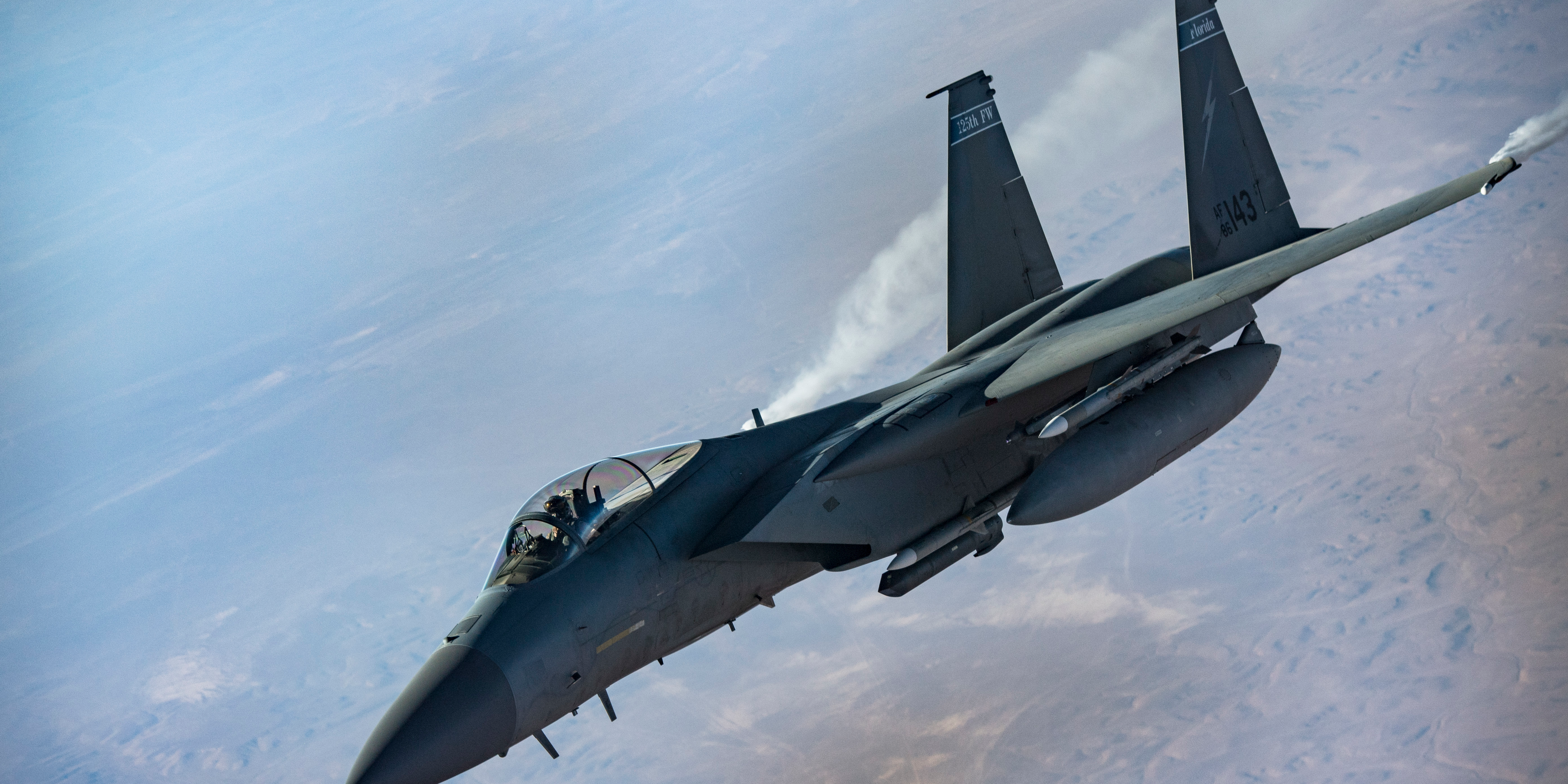- US Air Force F-15 Strike Eagles and F-35 Lightning II aircraft dropped 80,000 pounds of bombs on an island in Iraq’s Salah al-Din province believed to be used as a transit point for ISIS fighters between Syrian and Iraqi cities.
- “We’re denying Daesh the ability to hide on Qanus Island,” Maj. Gen. Eric T. Hill, the commander of Operation Inherent Resolve’s Special Operations Joint Task Force, said in a press release, using the Arabic acronym for ISIS.
- Although President Donald Trump said earlier this year that ISIS was defeated, the militant group has been resurgent in Iraq and Syria, at least partly because of Trump’s decisions to pull troops out of Syria, create a diplomatic vacuum in Iraq, and focus attention in the region on Iranian activity.
- Visit Business Insider’s homepage for more stories.
On Tuesday, US and Iraqi forces dropped 80,000 pounds of munitions on Qanus Island, in Iraq’s Salah-al-Din province, to destroy what Operation Inherent Resolve (OIR) called a “safe haven” for ISIS fighters traveling from Syria into Iraq.
“We’re denying Daesh the ability to hide on Qanus Island,” Maj. Gen. Eric T. Hill, the commander of OIR’s Special Operations Joint Task Force, said in a press release, using the Arabic acronym for ISIS.
Operation Inherent Resolve spokesman Col. Myles Caggins tweeted a video of the operation on Tuesday morning that shows bombs carpeting the tree-lined island from end to end, saying the island was “Daesh infested.”
VIDEO: Here’s what it looks like when @USAFCENT #F15 and #F35 jets drop 36,000 Kg of bombs on a Daesh infested island. 🛩💥 هكذا تبدوا الجزيرة الموبوءة بداعش بعد أن أسقطت عليها الطائرات المقاتلة #أف-15 و #أف-35 36,000 كغم من الذخيرة pic.twitter.com/2v6FAEL9Rn
— OIR Spokesperson (@OIRSpox) September 10, 2019
Air Force Central Command tweeted an additional statement, saying that the strikes come at the "behest of the Iraqi government" and that Qanus Island is believed to be "a major transit hub and safe haven for Daesh."
A spokesperson for OIR told Insider that ISIS casualties were still being assessed but that there were no casualties for the coalition or the Iraqi Counter-Terrorism Services. A small cache of abandoned weapons was found on the island, the spokesperson said. The spokesperson said the number of ISIS militants on the island at the time of the strike was unknown.
After the group's supposed defeat in March, the Islamic State regrouped in Syria and Iraq, partly as a result of troop withdrawal in Syria and a diplomatic vacuum in Iraq, according to a Pentagon Inspector General's report. The report also blamed Trump's focus on Iran for the resurgence, saying that the administration's insufficient attention to Iraq and Syria also contributed to ISIS's ability to regroup, even though it has lost its caliphate.
While ISIS is not nearly as powerful as it once was - the Pentagon estimates the group has only 14,000 to 18,000 fighters in Iraq and Syria at present, compared with the CIA estimate of between 20,000 and 31,500 in 2014 - it is still carrying out assassinations, crop burnings, ambushes, and suicide attacks.
OIR said that it targeted the area because ISIS militants were using the tiny island to transit from Syria and the Jazeera desert into the Iraqi cities of Mosul and Makhmour, and the Kirkuk region. The dense vegetation there allowed militants to hide easily, according to OIR.

The airstrikes, carried out by US Air Force F-35 Lightning II and F15 Strike Eagles, came in the midst of Iraqi Prime Minister Adel Abdul-Mahdi's new policy to consider flights in Iraqi airspace hostile unless they are preapproved or a medical emergency. That policy took effect on August 15. These aircraft typically carry Joint Direct Attack Munitions, which are precision-guided air-to-surface munitions.
According to the release, Iraqi Counter-Terrorism Services are carrying out additional ground operations on the island to "destroy any remaining Fallul Daesh on the island."

